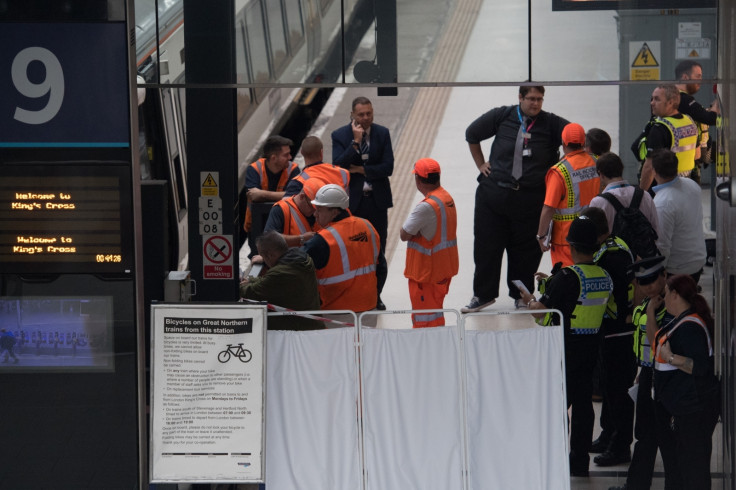Train hit the buffers at busy railway station after tired driver had 'a microsleep'
Four passengers and one member of staff suffered minor injuries in the collision at London's King's Cross.

A train collided with the buffer stops at a busy London railway station because the tired driver "experienced a microsleep" in the final seconds as brakes should have been applied.
A passenger train travelling at around 4mph collided with buffers at King's Cross station at around 6:23am on 15 August. There was "minor damage" to the train and buffer stops and four passengers and one member of staff suffered minor injuries.
A report by the Rail Accident Investigation Branch (RAIB) said that seconds before the collision, the train passed a sensor designed to intervene if a service is going too fast but that the train was travelling at 9.2mph, below the 12.5mph needed to signal intervention.
"[T]he system is designed to ensure that trains passing the sensor are approaching the buffer stops at a speed from which they can stop, but will not necessarily prevent a collision if the driver does not control the train," the RAIB said.
Six seconds after hitting the sensor, a brake was briefly applied, then nine seconds later the emergency brake was applied, three seconds later the collision occurred, the report said.
The RAIB said that the driver had been suffering from fatigue after a "relatively demanding night shift" for which she was "not sufficiently well rested." The driver told investigators that she noted passing the sensor but then closed her stinging eyes. When she opened them, she was too close to the buffer stops.
RAIB said that Great Northern, which ran the service, had fatigue management procedures that had not been updated since 2010. The driver's shift was set to last eight hours and 35 minutes, which is over the eight-hour limit recommended for first night shifts, the report said.






